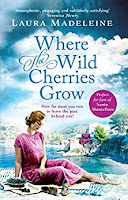 |
| © Rachel Sherlock Photography |
There’s no telling where food memories might take us. Like the bittersweet caramel and vanilla of the first canelé I ever ate in Saint-Émilion. That little pastry went on to inspire my first novel, The Confectioner’s Tale. Likewise, my father can pinpoint the moment he fell in love with my mother, as they shared a meal of freshly baked bread, prawns and white wine in the sun one lunchtime.
Food and memory, love and landscape are often inextricably linked. When I was writing Where the Wild Cherries Grow, I was keen for Catalan food to play a pivotal role in the lives and emotions of the characters. Their intimate knowledge of the land is their way of belonging:
“Clémence could tell where a llangostin had come from by the colour of its shell, where a goat had grazed by the taste of its cheese. She knew the town in the same way: as a collection of individuals, each influencing the complex whole.”One of the most useful research tools I found to help me understand the spirit, the emotion and indeed the memory of Catalan food was a medieval recipe book, The Book of Sent Soví. It was written or collected sometime during the mid-14th century, before the discovery of the new world; no tomatoes, peppers or potatoes here! In its pages, I discovered that Catalan food holds a memory of its people. Fishing and hunting cultures come together in mar i muntanya, (sea and mountain) dishes, combining squid and rabbit, game birds and seafood in glorious abandon. There are early Arabic influences in almonds and olives, aubergines and spices, and later, rum from the newly-established plantations in South America, finding its way into the fiery Catalan drink of cremat.
In this sense, taste-memory goes deeper than the individual; it’s a way of time-travelling, of delving into the social and cultural fabric of a place. The best way to experience this, is of course, to eat (as well as read). My tip? Find a low-key, family-run place, order the specials, and get ready to embrace a whole new set of memories.
How far must you run to leave the past behind you?
It is 1919 and the end of the war has not brought peace for Emeline Vane. Lost in grief, she is suddenly alone at the heart of a depleted family. She can no longer cope. And as everything seems to be slipping beyond her control, in a moment of desperation, she boards a train and runs away.
Fifty years later, a young solicitor on his first case finds Emeline’s diary. What Bill Perch finds in the tattered pages of neat script goes against everything he has been told. He begins to trace an anguished story of love and betrayal that will send him on a journey to discover the truth.
I closed my eyes as I tried to pick apart every flavour, because nothing had ever tasted so good before. It was love and it could not be hidden.What really happened to Emeline all those years ago?

No comments:
Post a Comment